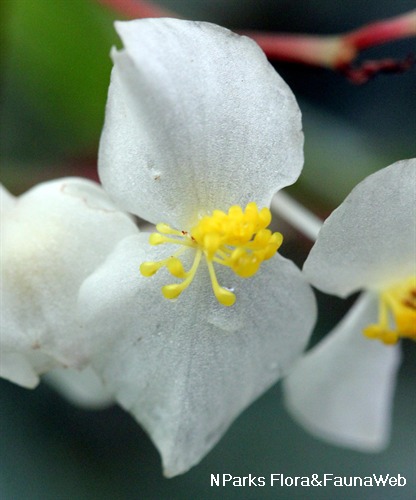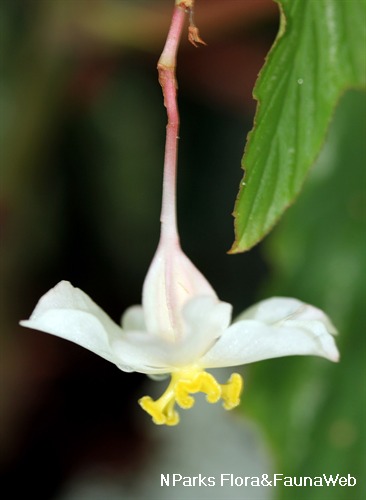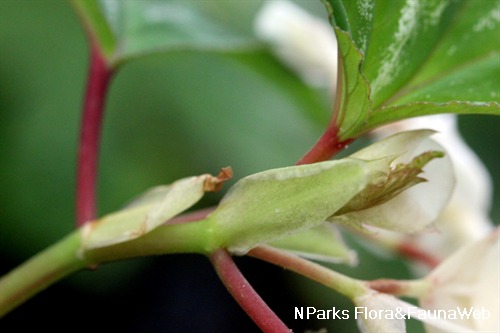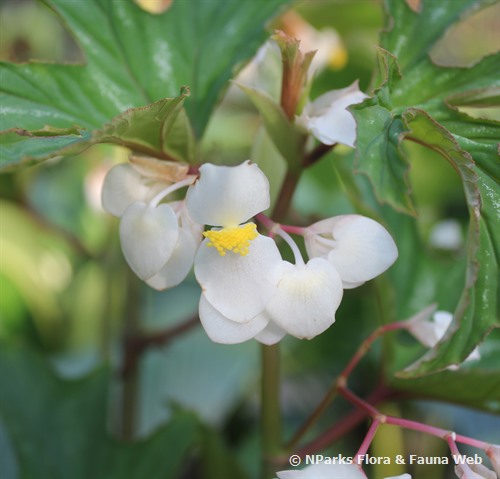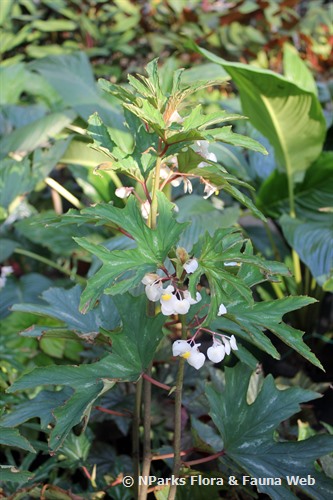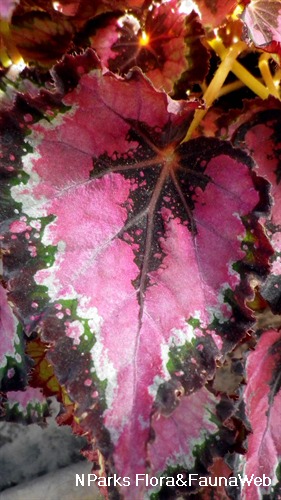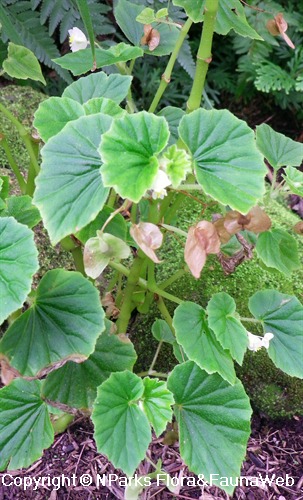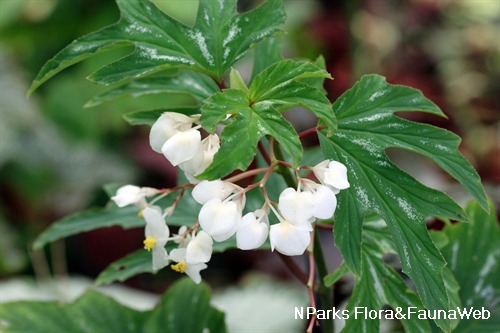
Name
Classifications and Characteristics
| Plant Growth Form | Herbaceous Plant |
|---|
Biogeography
| Native Distribution | Brazil |
|---|---|
| Native Habitat | Terrestrial |
| Preferred Climate Zone | Tropical |
Description and Ethnobotany
| Growth Form | Cane begonia to 1.2m tall |
|---|---|
| Foliage | Leaves palmately lobed, base color mid green. Leaf blade with silvery white markings; markings very faint - dense; appearing as sparse, thin streaks or clustered spots, or covering almost the entire leaf blade with the exception of the vein. Juvenile leaves light green with pale pink - reddish tinge. |
| Flowers | Male and female flowers white; male flowers with 2 tepals; female flowers with 5 tepals. |
| Etymology | The specific epithet 'aconitifolia' - having leaves resembling the Aconitum or the Monkshood/ Wolf's bane plant, a temperate genus. |
Landscaping Features
| Desirable Plant Features | Ornamental Foliage, Ornamental Form |
|---|---|
| Landscape Uses | Small Gardens, Interiorscape/ Indoor Plant, Container Planting |
Fauna, Pollination and Dispersal
| Pollination Method(s) | Biotic (Fauna) |
|---|
Plant Care and Propagation
| Light Preference | Semi-Shade |
|---|---|
| Water Preference | Lots of Water, Moderate Water, Occasional Misting |
| Rootzone Tolerance | Moist Soils, Well-Drained Soils, Fertile Loamy Soils |
| Pest(s) | Chewing Insects, Sucking Insects |
| Propagation Method | Stem Cutting |
Foliar
| Foliage Retention | Evergreen |
|---|---|
| Mature Foliage Colour(s) | Green, Silver / Grey, White |
| Mature Foliage Texture(s) | Thin |
| Prominent Young Flush Colour(s) | Green - Light Green, Pink |
| Young Flush Texture(s) | Thin |
Floral (Angiosperm)
| Flower Colour(s) | White |
|---|---|
| Flower Texture(s) | Thin |
| Flower Grouping | Cluster / Inflorescence |
Image Repository
Others
| Master ID | 31312 |
|---|---|
| Species ID | 5709 |
| Flora Disclaimer | The information in this website has been compiled from reliable sources, such as reference works on medicinal plants. It is not a substitute for medical advice or treatment and NParks does not purport to provide any medical advice. Readers should always consult his/her physician before using or consuming a plant for medicinal purposes. |

